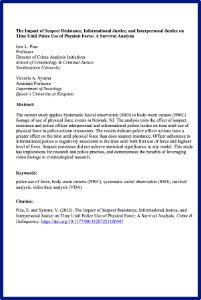By John A. Shjarback
Broader public, media, and scholarly interest in police shootings of residents in the United States has been a constant since 2014. This interest followed a number of high-profile deadly force incidents, including those leading to the deaths of Michael Brown in Ferguson, MO, and Tamir Rice in Cleveland, OH. In the decade since, researchers from a variety of academic disciplines have learned much about the scope and nature of police shootings. While US police as a whole use their firearms more than most other countries, rates of police shootings of residents vary across states.
The purpose of this report is to examine police shootings of residents—including both fatal and nonfatal, injurious incidents—using a comparative lens. More specifically, it explores rates of police shootings in the states comprising the Regional Gun Violence Research Consortium (RGVRC)—Connecticut, Delaware, Massachusetts, New Jersey, New York, Pennsylvania, and Rhode Island—with the rest of the country. These comparisons suggest an association between levels of firearm prevalence/availability in the general population, as well as related laws and rates of police shootings per capita. The majority of RGVRC states possess the lowest rates of police shootings of residents, which appears to at least partially be a function of low levels of firearm prevalence/availability among residents and strong laws and legislation related to guns.
Albany, NY: Rockefeller Institute of Government, 2024. 20p.












